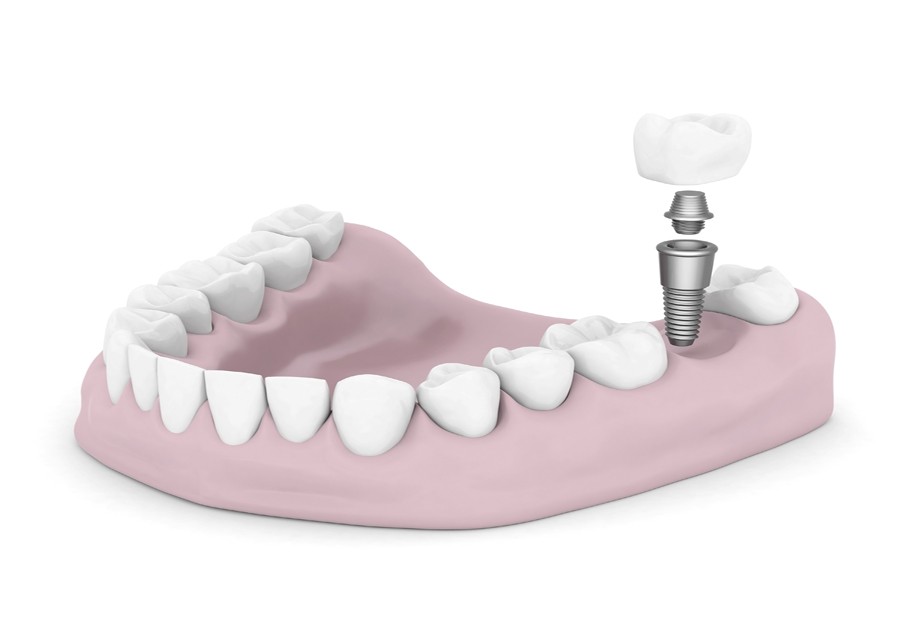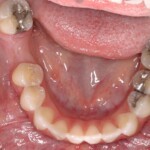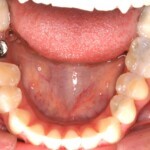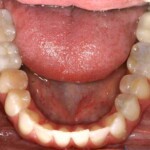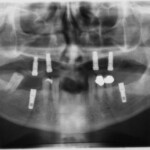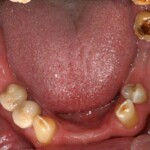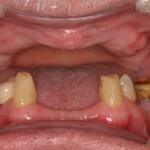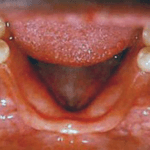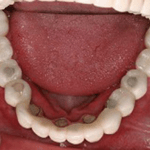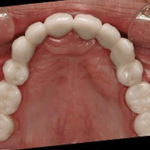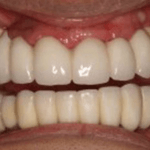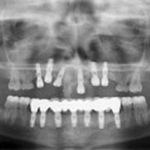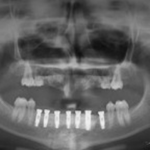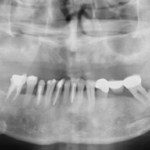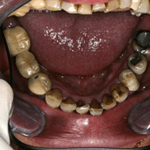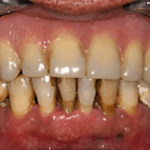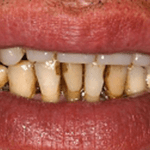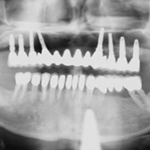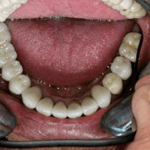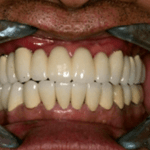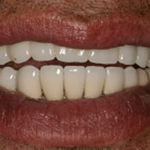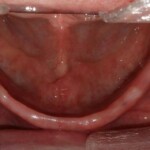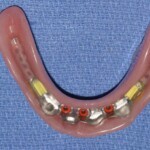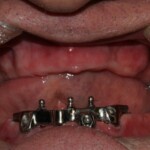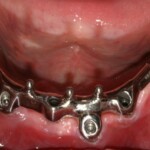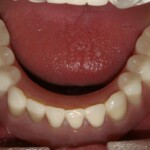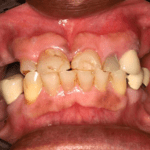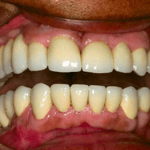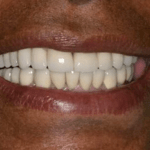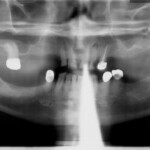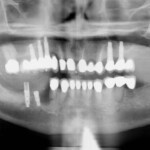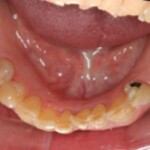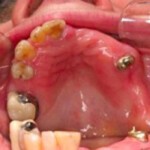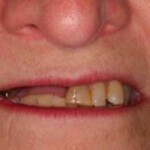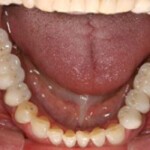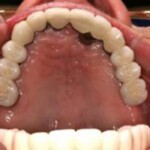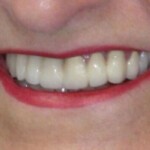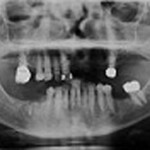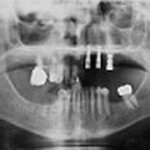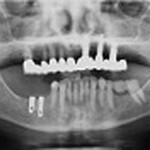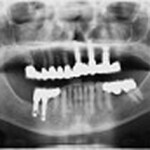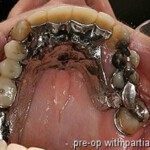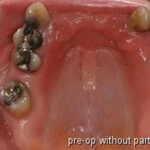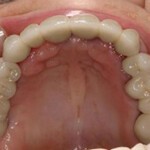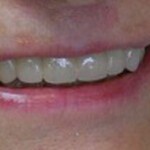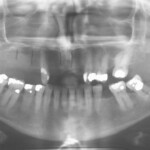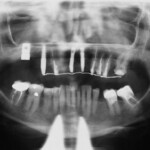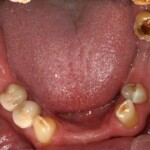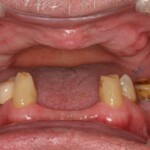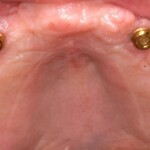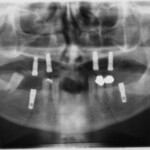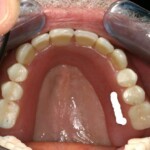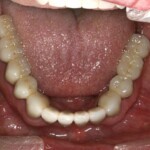Dental Implants From Houston’s Ingenious Dentistry – Dr. Dale Brant
If you suffer from missing teeth, you can once again achieve a beautiful smile with dental implants from Medical Center Dental Group in Houston, TX.
Our dental implants are so comfortable and natural looking you may even forget that you ever lost a tooth. We use the latest technologies and advancements in dental implants to restore your confidence.
Dental implants are a perfect solution for anyone who has lost teeth due to decay, gum disease or injuries to the mouth or jaw. They are a long-term treatment that will permanently replace lost or broken teeth and give you perfect teeth once more. Reduce pain and get yourself the smile you’ve always wanted!
CONTACT US FOR PROCEDURE INFORMATION
A full-mouth restoration can even be achieved with the use of dental implants, designed to replace all of a patient’s teeth without the need for uncomfortable and unsightly dentures.
At Medical Center Dental Group in Houston, Dr. Dale Brant and his staff are experienced with implant dentistry and will work with you to restore your smile to its full glory.
Types of Dental Implants
Ceramic Implants
Ceramic dental implants are emerging as a more aesthetically appealing alternative, although steel and titanium alloys are still the standard and have been successfully used for years. They are naturally closer in color to natural teeth, so they do not cause the unnatural and unsightly gray line on the gingival margin or shadow in the gum. Beyond just being fashionable, they are highly functional.
Ceramic implants are made from zirconia, which is an extremely strong material that is hard and scratch-resistant. It has been used for crowns and bridges for several years. Its properties have drawn a lot of attention to this material. Professionals have taken note of it because of its strength, biocompatibility, and the fact that it is metal-free.
Titanium Implants
Titanium dental implants are the best teeth replacements available to patients. This metal has a chemical composition that makes it perfect for medical applications. Until this was discovered in 1952, practitioners were only able to place dentures or bridges made from subpar materials. Dr. Per-Ingvar Branemark was the person who discovered this metal’s medical properties. In 1965, he installed the first tooth replacements using the substance. These replacements lasted until the patient’s death 40 years after the procedure.
The reason that titanium implants are the safest and most effective option has to do with how the replacement is designed. Unlike dentures or bridges, these replacements are anchored in the bone using a metal root. The body rejects most foreign materials placed in the body, including metals. Iron, stainless steel and most other metals are chemically altered in the presence of oxygen. This is known as oxidization. During oxidization, the top layer of atoms in the material loses its ability to bond with the rest of the metal and is released into the body. These atoms are ionized and quickly bond to proteins in the body. This activates an immunological response that attacks the body’s own proteins, causing rejection.
This is not a concern with titanium. While this metal does oxidize over time, it is so inert that it does not release its bonds with other atoms. As a result, ionized particles are not released into the patient. In effect, the replacement is “invisible” to the patient’s immune system. This allows the bone in the jaw to heal and grow around the metal root without trouble. This remarkable chemical composition means that 95 percent of patients will be able to accept the replacement without trouble.
Frequently Asked Questions About Dental Implants
What Are Dental Implants?
Implants are replacement teeth that are custom molded to fit perfectly into your natural smile. The porcelain crowns are matched to your existing teeth for visual continuity, comfort and improved oral hygiene. In some cases, these crowns are bonded directly to existing root material to restore chipped or worn down teeth. In other cases, an anchor is inserted into the jaw to hold the replacement tooth in place and keep it from moving or becoming loose.
How Do Dental Implants Work?
Patients who are interested in implant dentistry will be happy to know that their whole mouth reconstruction if needed, can be done in as little as two appointments. The first appointment will give the doctor a chance to clean your teeth, remove any signs of decay and take the molds that will be used to create your new teeth. In the meantime, you will be given temporary crowns to wear while the actual porcelain molds are being created. At your second appointment, the temporary crowns will be removed and the new teeth will be put in place.
Dr. Dale Brant says, “Implant dentistry is the perfect solution for patients who need to restore missing, broken or badly decayed teeth or who are wearing poor-fitting dentures. At Ingenious Dentistry, we can make your smile more beautiful than you ever imagined.”
How Are Dental Implants Different from Dentures?
Implants are a more permanent solution to mouth reconstruction. They do not require nightly removal or the use of adhesives to keep them in place. They also prevent lesions and abrasions in the mouth that are typical of dentures and bridges because they are directly connected to the structure of your jaw. Thus, they cannot move or slide out of place. This has a great effect on your ability to eat, speak and smile naturally for better self-confidence. Essentially, implants look and function just like natural teeth.
Implants require the same care that your natural teeth need to stay clean. This means brushing and flossing regularly and going to your dental cleaning appointments twice a year. Patients will need to be vigilant about their dental health to keep their implants in good condition, but they can last a lifetime if they are cared for properly.
Ultimately, the use of implant dentistry provides a very easy way for patients to experience the joy of a healthy and beautiful smile. Implant technology makes it possible to restore teeth, while also fitting into the natural bite of the patient. Those who have dealt with dentures and bridges in the past can benefit from implant dentistry to stop struggling with discomfort and slippage while talking, eating, and drinking.
How Much Do Dental Implants Cost?
The benefits go far beyond appearance to having teeth that are attractive and aligned. Gaps in the mouth can affect speech and can have disastrous consequences if not addressed. Teeth on either side of the missing tooth will begin shifting within a few weeks of the loss and may shift to the point of an expensive repair or even beyond repair within six to eight months.
Some individuals are concerned about the cost of dental implants. They choose to wear ill-fitting dentures or get a bridge instead of getting an implant, which is much longer lasting and stable. Consideration should be given to the expertise of the oral surgeon performing the procedure, and to the materials that are to be used. With the options available on the Internet today, there is easy access to verify the qualifications of the doctors, and the quality of the materials being used.
Two of the main materials affecting the price of this procedure today are titanium and zirconium. Titanium has been used for quite a while. It has certain qualities that make it a good choice. The titanium implant replaces the root of the tooth, which is much longer than the part of the tooth that shows. Another option to titanium is zirconium, which looks more like ceramic. Zirconium is white and looks more like a tooth than titanium. Zirconium is also hypoallergenic and therefore better for those with sensitive teeth.
Those considering dental implants to replace broken or missing teeth should also weigh the cost of doing so against the expected future expenses of not doing so. Dr. Dale Brant has years of experience with dental implants. “When teeth break or fracture, the nerve in the tooth can be exposed and this will eventually lead to the nerve getting infected,” Dr. Brant says. “Once the nerve in the tooth is infected, a series of events occur inside the tooth leading to swelling and unbearable pain. If the tooth is beyond repair, then it needs to be extracted. The ideal solution is a dental implant to replace the missing tooth.”
Infections Will Lead to Expensive Issues
For children, losing teeth is normal and natural. For adults, a loose tooth is often the sign of a bigger problem. Infections in the bone or gums can lead to loose teeth and can also result in a long list of more serious medical issues. These include heart disease, stroke, liver infections, and diabetes complications, among others.
To prevent these health issues from occurring, it is best to have problem teeth removed and missing teeth replaced.
Dental Implant Statistics
Information provided by the US National Library of Medicine:
- The earliest examples of dental implants were made by early civilizations using carved stone, shells, bones, or gold.
- Roughly 69% of adults ages 35 to 44 have lost at least one tooth.
- Approximately 26% of adults have lost all original teeth by the time they are 74.
- Every year around 450,000 osseointegrated dental implants are placed.
Medical Center Dental Group
Dr. Dale Brant is an expert in implant dentistry and full-mouth rehabilitation. If you are interested in restoring your smile to its healthiest, brightest appearance, Dr. Brant and his team are happy to find the right solution for you.
Medical Center Dental Group is located at 6560 Fannin St #1424, Houston, TX 77030. Call us to make an appointment at (713) 795-5905.
Reviews:
Other Dental Services at our Houston Dental Office
This is the most common use of a dental implant. Note that there is one missing molar, replaced by a single, fixed dental implant with a porcelain crown on the implant.
- Missing Molar
- Healed Metal Implant-Healed Tissue
- The Completed Porcelain Crown In Place
This is complex use of dental implants in a patient who was born missing many teeth. Over the time period of approximately 2 years, this patient was able to have dental implants take him from struggling with shyness to a confident smile through the use of many professional implants.
- Before
- Before
- Before
- Before
- After
- After
- After
- After Complete
This patient had a complete upper denture by having his teeth taken out over the years. He was very close to losing all his teeth and having upper and lower dentures. Through the use of bone grafting and dental implants, he now has complete mouth fixed bridge restorations – with no more removable denture as part of his dental picture.
- Before
- Before
- Before
- After
- After
- After
This patient had all his teeth removed and wore removable upper and lower dentures for 40 years. His chief complaint was his lower denture. He was alright with his upper denture. With the use of multiple implants and a fixed mandibular bar / overdenture, his dental function was much improved.
A removable overdenture snaps onto this fixed bar, and the lower denture is very tight and stable. This combination works well in cases of advanced atrophy after long-standing tooth loss.
- Before
- After
This is a common case that we see in patients seeking dental implants. After losing several (but not all) of their teeth, there are opportunities to use implants on just one side or one area that needs strength. By adding strength with implants, we are able to restore fixed or improved function.
- Before
- After
- After
- After Complete
This is a similar case in which some of the teeth are missing, but there is enough strength in remaining teeth to build a strong bite without having to do the full mouth. A combination of existing teeth and newly-placed implants provide enough strength to reconstruct the problematic situation.
- Before
- Before
- Before
- After
- After
- After
- After Complete
This is another mixed case in which the patient originally was using a removable partial denture that she did not like at all. With the use of strategic dental implants, in combination with her natural teeth that remained which were strong enough to contribute, she got about ¾ of her teeth and implants replaced by porcelain bridgework – nothing removable! She appreciates having teeth that do not come out.
- Before
- Before
- After
- After
- After Complete
Complex combination case using implants in combination with a horseshoe-shaped upper denture as final prosthesis – very stable.
Note lower arch final product is fixed porcelain bridgework – not taken out
Note that upper final product is removable, horseshoe-shaped removable snap-on
stardenture stabilized by implants.
- Before
- Before
- After
- After
- After Complete
Learn what to expect during implant dentistry procedures by visiting the video gallery, click here.


